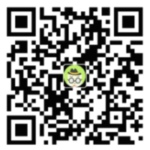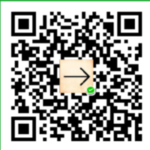Passage 40
In an unfinished but highly suggestive series of essays, the late Sarah Eisentein has focused
attention on the evolution of working women’s values from the turn of the century to the First
World War. Eisenstein argues that turn-of-the-century women neither wholly accepted nor rejected
what she calls the dominant“ideology of domesticity,” but rather took this and other available
ideologies-feminism, socialism, trade unionism-and modified or adapted them in light of their won
experiences and needs. In thus maintaining that wages-work helped to produce a new
“consciousness” among women, Eisenstein to some extent challenges the recent, controversial
proposal by Leslie Tentler that for women the work experience only served to reinforce the
attractiveness of the dominant ideology. According to the Tentler, the degrading conditions under
which many female wage earners worked made them view the family as a source of power and
esteem available nowhere else in their social world. In contrast, Eisenstein’s study insists that
wage-work had other implications for women’s identities and consciousness. Most importantly,
her work aims to demonstrate that wage-work enabled women to become aware of themselves as a
distinct social group capable of defining their collective circumstance. Eisenstein insists that as a
group working-class women were not able to come to collective consciousness of their situation
until they began entering the labor force, because domestic work tended to isolate them from one
another.
Unfortunately, Eisenstein’s unfinished study does not develop these ideas in sufficient depth or
detail, offering tantalizing hints rather than an exhaustive analysis. Whatever Eisenstein’s overall
plan may have been, in its current form her study suffers from the limited nature of the sources she
depended on. She use the speeches and writings of reformers and labor organizers, who she
acknowledges were far from representative, as the voice of the typical woman worker. And there
is less than adequate attention given to the differing values of immigrant groups that made up a
significant proportion of the population under investigation. While raising important questions,
Eisenstein’s essays do not provide definitive answer, and it remains for others to take up the
challenges they offer.
249. The primary purpose of the passage is to
(A) criticize a scholar’s assumptions and methodology
(B) evaluate an approach to women’s study
(C) compare two sociological theories
(D) correct a misconception about feminist theory (B)
(E) defend an unpopular ideology
250. It can be inferred from the passage that, in Eisenstein’s view, working women at the turn of
the century had which of the following attitudes toward the dominant ideology of their time?
(A) They resented the dominant ideology as degrading.
(B) They preferred the dominant idology to other available ideologies.
(C) They began to view the dominant idology to other availbale ideologies.
(D) They accepted some but not all aspects of the dominant ideology. (D)
(E) They believed that the dominant ideology isolated them from one another.
251. Which of the following best describes the organization of the first paragraph of the passage?
(A) A chronological acount of a historical development is presented, and then future develpments are predicted.
(B) A term is defined according to several different schools of thought, and then a new definition is formulated.
(C) A theory is presented, an alternative viewpoint is introduced, and then the reasoning behind the initial theory is summarized.
(D) A tentative proposal is made, reasons for and against it are weighed, and then a modified version of the proposal is offered. (C)
(E) A controversy is described, its historical implications are assessed, and then a compromise is suggested.
252. Which of the following would the author of the passage be most likely to approve as a
continuation of Eisenstein’s study?
(A) An oral history of promotion women labor organizers
(B) An analysis of letters and diaries written by typical female wage earners at the turn of the century
(C) An assessment of what different social and political groups defined as the dominant ideology in the early twentieth century
(D) A theoretical study of how socialism and feminism influenced one another at the turn of the century (B)
(E) A documentary account of labor’s role in the introduction of women into the labor force
关键字:gmat测验 gmat测验时候 gmat测验报名 gmat测验介绍 什么是gmat测验
上篇:
PETS5测验时候及报考须知
下篇:
GMAT测验RCOGWORD(十七)
1 一篇文章搞懂关键词、APP榜单排名、热门搜索等ASO优化知识! 2 今日头条官方正式上线CPA(按转化计费)模式! 3 移动APP应用运营推广模式_全面讲解什么是AARRR模型? 4 ASO优化推广经验:如何做好APP关键字优化? 5 什么是互联网运营?互联网运营主要是做什么的?工作内容和流程? 6 深度解读互联网运营!一篇文章让你知道什么是运营! 7 Rand Fishkin谈内容营销与SEO 8 最适合建站的Drupal主机推荐 9 伤不起的软文编辑人员 是凡人还是神仙? 10 微信公众平台快速上手教程Part4 关键词自动回复 11 思考组成网站的各个部分是否具有存在的必要呢? 12 学习网站优化的一些小经验分享






